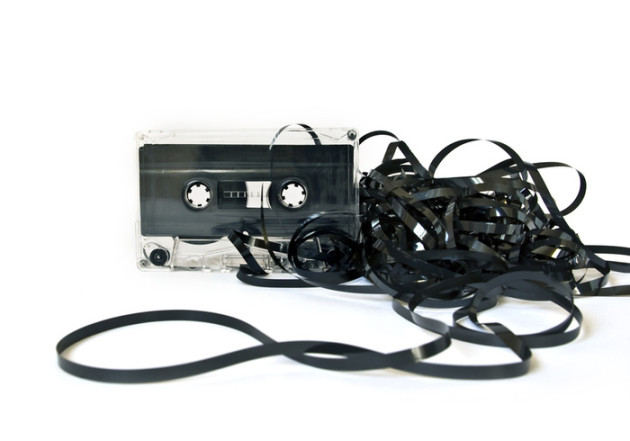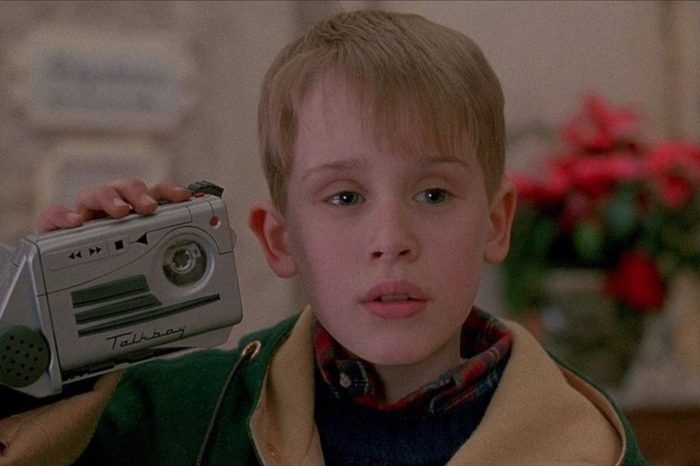
Compact cassette music sales rose 140% over last year. Wow, noise, and flutter! How quaint. Hipsters have declared their love for a format that, unlike the vinyl LP, does not even sound particularly good. The most commonplace Dolby noise reduction systems in most cassette decks cause immense loss of high end detail. Most hipsters collecting cassettes can’t even find a player with a properly aligned tape head. Most will probably be using ghetto blasters or Talkboys as they were six in 1992 when Home Alone 2 came out.
When will CDs become popular again with hipsters? In another ten or twenty years? Will hipsters spike the price of early underground metal CDs ever more so, with the ones from the 80s that are rarer than the original LPs going up to hundreds? Can hipsters comprehend how digital audio works and how good having a playback medium free of noise with linear extension from 20hz to 20 kHz really is? Remember the Pitchfork crowd do not purchase multi-bit digital to analog converters, high-end turntables not made of rubber belts and medium density fiberboard, great output transformer coupled tube amps, quality transducers, and other sorts of high-fidelity goodies. They can’t afford those and wouldn’t even know where to buy them; hipsters use Crosleys from Target and boom boxes junkies pawned off to listen to beat up analog formats quickly destroyed through not bothering to set correct tracking force and alignment. Perfect sound is not forever unlike buying a CD and ripping it securely.
Tags: compact cassette, hipster bullshit, hipsters



The vhs crowd rears its ugly head.
There WAS a time when you could pick up metal albums on vinyl for cheap at goodwill (they haven’t been cheap at record stores for 25 years) but the hipsters came along & ruined that. $5 – $10 now. The clear solution is to put ricin in stacks of obsolete audio formats & hand them out at hipster hotspots.
fuckin A ! best solution ever!
i always had a walkman or ghetto blaster as tapes could be carried around easy, and played everywhere.
Most of the people I knew still had cassette players in their vehicles too, and what kind of dork doesn’t have a tape deck with their stereo system?
became royally pissed off when I was looking for old metal LP’s in used stores, and discovered maybe around 2009 that prices that were $8 were jacked up to $20+ !
arrrrggghhh
Back when I liked classical I used to buy a ton of used records the same way. Now they just take up space, are used as frisbees, cat napping spots or spousal annoyance.
Have you considered an article, or series, on quality audio equipment?
I have a few planned. I’ll probably start with headphones and powered monitors.
fyi
Teh pair of headphones I bought around 2002, Sony MDR P180, was reviewed as great at the time, and they still sound great, if I do not move around much.
Made of plastic binding so one side snapped and keep tit together with electrician’s tape, and the plug into the system has to be at the correct angle, otherwise it is now mono.
what a mistake buying cheap products from asians.
Better off by paying more and buying German stereo equipment like Telefunken.
NEVER buy Sony or Sanyo products… unless you are poor and have no choice.
The only reason I still buy compact cassettes is mostly to get demos or otherwise out of print or out of press albums. Beyond that, and beyond some kind of desire for Eastern European bootleg albums there’s no real reason to continue on with this format.
Has to be mentioned again: Reconstructing a curve by connecting horizontal line segments at different heights with vertical lines leads to a so-called ‘staircase’: The result isn’t really a curve but increasingly resembles one to a human eye as the horizontal segments get smaller, IOW, the number of sampled points increases. To worsen matters further, the precision of the sampled input data is limited. This means the actually sampled value is represented by the closest representable value. And 65536 representable values (16 bit) is so poor that nobody would use that for ‘serious’ calculations.
It is conjectured that the inherent errors in this can’t be noticed by a human listener. Especially one who never knew anything else.
I’ve actually written a small Perl program sampling a sine curve at different frequencies with different precisions in order to illustrate the difference, however, I don’t think I can legally make this available without getting permission from my employer first (this means that 9 out of 10 people will assume I must be lying about they can’t imagine anything ‘in IT’ beyond user support and open source).
As long as you are programming in the language of the gods (Perl) all is right in the world.
PCM does not result in a “stair step” function and works for audio as hearing is frequency-limited. The dynamic range afforded by a 16-bit release format exceeds that of all masters ever commercially released too.
Watch the Xiph.Org videos: https://www.xiph.org/video/
PCM does not result in a “stair step” function and works for audio as hearing is frequency-limited.
You obviously know more about practical digital recording than I ever will (or would care to know) but this is crossing into another field here, namely “computers working with numbers”: According to what common sense (if you’re a programmer at least) would suggest and consistent with every written description of the process I found, PCM modulation works by sampling the amplitude of a complex wave/ curve at a fixed rate. For 44.1Khz, this means every .0000228s (rounded) section of the input curve is represented by a single number and this single number is the 16 bit number closest to the actually measured value (in the interest of simplicity, I’m ignoring downsampling from a higher bit-rate). There’s an inherent error here (known as ‘quantization error’. What’s done if the recorded value is exactly in the middle between two representable ones?). And ‘demodulation’ works by ‘playing’ a sample for .0000228s and then playing the next. Even if the software was doing something funky here in order have some non-straight transition (and unless I see this in the actual code and not commented out and replaced by linear-congruent PRNG ripped out the the BSD source, I don’t believe this for a second), ‘something funky’ would still be entirely unrelated to the original curve.
As there’s no way to measure ‘audibility of frequences’ except ‘asking people to press a button when they can hear something’ (also simplified), nothing is really known about this in general. It is assumed that frequencies above 20khz don’t matter because most of the very limited number of people this was tested with didn’t react to them. Same thing for the lower frequency barrier. This conjecture is accurate enough for ‘digital audio’ to ‘work’.
1. If you want to understand digital audio I suggest you seek out the works of Claude Shannon, instead of trying to invent your own sampling theory.
2. If you want to know your hearing range, you can have an audiogram taken at an audiologist’s.
3. If you’d like to appear as having a clue, please study some publically available documents on PCM and then point out what I got wrong instead of randomly dropping names of people who – as far as I could quickly determine – never worked in the field.
Turns out something I knew as Nyquist-theorem is actually the Nyquis-Shannon theorem. The extremely simplified version of that is that a sampling frequency of at least 2*N Hz is needed to sample a N Hz signal without adding distortion because of so-called aliasing (I’m not going to try a short definition of that here). I didn’t write anything about that as its orthgonal to what I had been writing.
This is obviously completely unrelated to “how does DAC work”,
https://en.wikipedia.org/wiki/Digital-to-analog_converter
in particular, the picture titled “piecewise constant output” and to the fact that the mentioned reconstruction filter cannot really reconstruct the original curve, just smooth the transition (as I already wrote).
As I also already wrote, The person whose hearing is being tested listens to sounds transmitted by an audiologist and presses a button to signal when they have heard something. The results of the test are plotted on an audiogram.
https://www.hearinglink.org/your-hearing/hearing-tests-audiograms/what-is-an-audiogram/
But asking people about their subjective impression about something is not the same as ‘measuring it’.
i have an aiwa xks9000 tape deck.. the very last, best high end deck made before cds took over.. it makes most hipsters flac files sound like a pitiful little picnic player!!
i dont give a fuck what format its on, as long as its something i like!
fuck metalsucks,
A.R.
Just another way to get the music into the ears, hip or not, if used properly well-kept well-made tapes still rival any other format on the HiFi. If you dont want to bother with the effort of proper usage they’re still great in the tool shed, garage, etc.